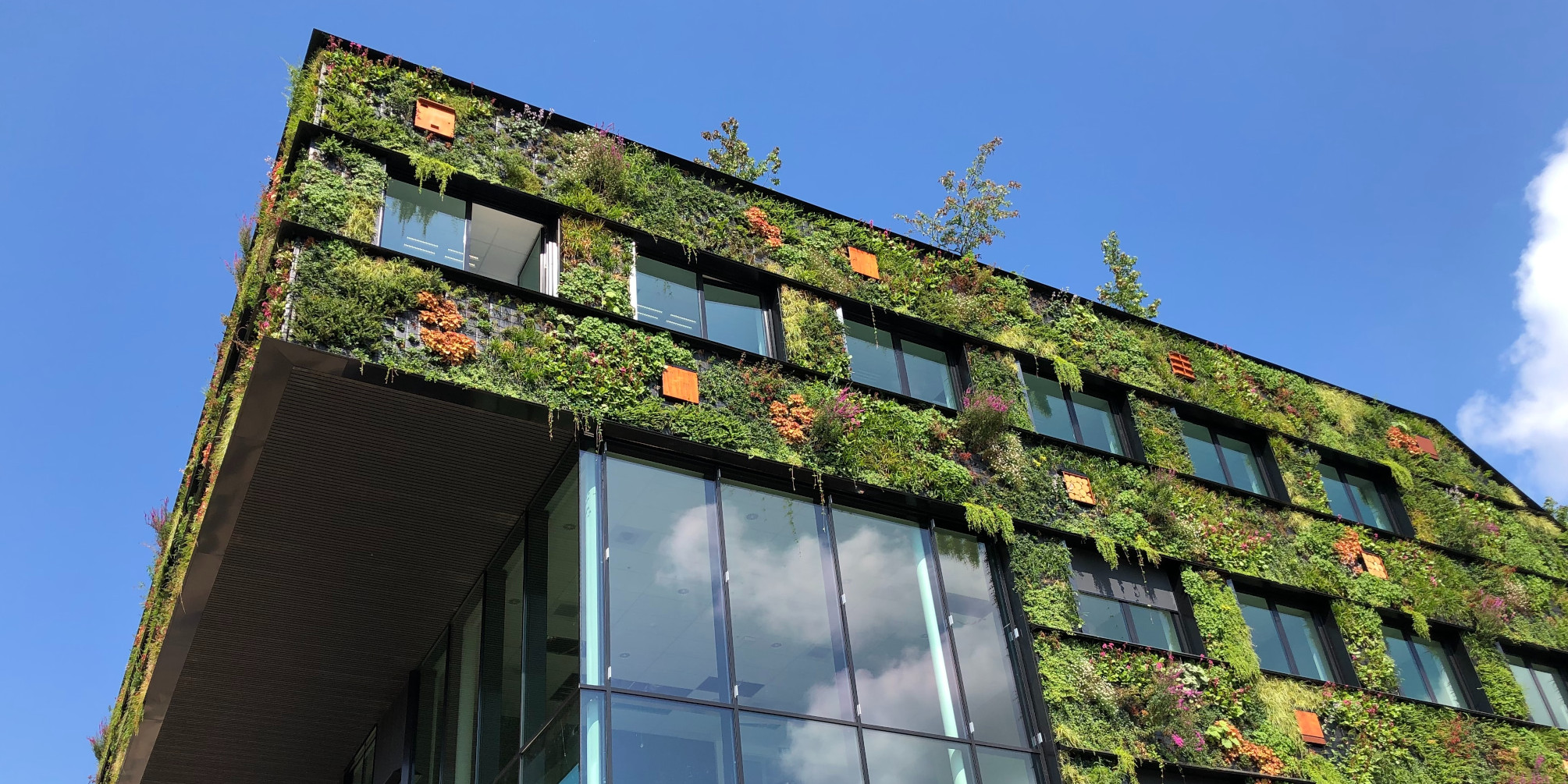The buildings sector is a significant contributor to global GHG emissions, and buildings are increasingly being impacted by green policies and rating systems. Wood can be perceived as an environmentally-friendly alternative to other building materials, but its benefits are not clear cut. Its impact on greening the buildings sector is also likely to be less significant than other measures that could be taken.
The global building sector is a significant contributor of greenhouse gas emissions, particularly through energy use in raw material extraction and processing, construction, and lifetime operation. Energy-related CO2 emissions from buildings and construction account for almost 40% of the total across all sectors [1]. It’s a heavy environmental footprint.
The flip side of the same coin is the extent to which the environment itself can impact buildings. As the effects of climate change grow stronger, real assets such as buildings and farmland face a range of significant risks. Events such as heatwaves, droughts, floods and storms have the potential to hugely affect assets that have not been built to cope with such extremes.
Understanding and addressing these impacts is becoming increasingly important for industry and real assets investors. It is imperative that portfolios can successfully navigate the challenges ahead, as well as meet advancing industry practices and tightening policy requirements. Amongst these is the Taskforce on Climate-related Financial Disclosures (TCFD), which provides a framework for companies to report climate-related risks and opportunities, and which in the UK has recently become mandatory for all large companies and financial institutions [2]. The UK is also tightening the energy ratings requirement for commercial lets, which will need to achieve a minimum EPC rating of B in 2030 [3].
Buildings are also commonly assessed against “green” rating systems such as LEED, BREEAM, and the newly emerged NABERS UK [4]. Compliance with these rating systems need not be considered a hinderance, since it has actually been associated with tangible benefits: lower long-term operational costs, an increase in capital value, and higher rents and occupancy rates [5]. In contrast, buildings with lower green ratings, or none at all, are exposed to the risk of capital depreciation and obsolescence in the face of tightening policy requirements.
Additionally, in the face of increased public concern for climate action, there is a growing reputational risk associated with ignoring environmental factors going forward, potentially leading to lower liquidity and less attractive assets [6].
It seems that greener, environmentally-resilient buildings will make stronger assets in the long term. But how green is green enough? And are all environmental credentials equally effective? I won’t attempt to answer these two large questions here. Instead, I’ll consider them in the context of just one credential – greener construction materials in the UK.

Buildings in the UK are primarily made from brick, concrete, and steel. The environmental impact of these – particularly concrete – is fairly large. Concrete is a significant contributor to global GHG emissions through the production of cement. This commonly involves a thermal decomposition reaction, in which limestone is heated to make calcium oxide. This chemical reaction releases carbon dioxide. Its use is so widespread that it contributes around 3% of total GHG emissions, which is around 1.5 billion tonnes CO2 eq annually [7]. That figure doesn’t include any emissions from the energy needed to power the thermal decomposition reaction, or other emissions from the concrete industry.
In some places, such as the US and Sweden, wood is a commonly used building material [8]. In these countries, wood has historically been both readily available and cost effective. It also has potential as a “green” building material, given its natural and renewable origins. Indeed, if you were planning to aim for a LEED certification, you would get credits for using FSC certified wood as a building material [9]. In the UK, “eco-homes” commonly use wood as a building material, and it is sometimes put forward as a potential route to decarbonization [10], as well as a consideration for ESG frameworks [11].
However, the efficacy of wood in this context is not clear cut. Proponents point out that, in addition to reducing dependency on high-carbon concrete and steel, wood can also have a “climate positive” effect by removing more carbon dioxide from the atmosphere than is added through its manufacture. As a rule of thumb, 1 m3 of wood contains around 1 tonne of stored CO2, which is equivalent to around 350 L of petrol [12].
Forests are most efficient at removing carbon from the atmosphere when their tree populations are young and actively growing [13, 14]. Large, mature trees shed a similar amount of carbon through dead leaf matter and fallen branches as is absorbed through new growth. Mature forests, in which the average age of trees is older, are carbon neutral. To maximise the rate of carbon removal, forests could be managed for maximum growth [15], similar to the maximum sustainable yield concept. However, this has drawbacks. For one thing, mature forests store more carbon than younger ones, owing to their greater biomass. Managed forests therefore store less carbon than unmanaged, primary forests. They also do not compare favourably for ecosystem quality or ecosystem services.

It’s also important to consider that only a minority of the stored carbon in a tree actually ends up as wood. Nearly half is left on the forest floor as unused material in roots and branches, where it is released back to the atmosphere through decay. A further 25% is lost during the manufacturing process [16]. Wood also continues to lose carbon during the product lifecycle as it slowly decays over time. These figures mean that for every tonne of CO2 stored in 1m3 of wood, about 3 more tonnes are released back to the atmosphere during its production, from an original 4 tonnes stored by the tree.
That isn’t very efficient, but perhaps it doesn’t matter if the net result is still climate positive and reduces our dependency on carbon-intensive alternatives. Inefficient systems make me instinctively uncomfortable, but I’ll leave that aside for now. If primary forests are not destroyed to make way for managed forests, and managed forests instead take the place of carbon poor environments, there may be an opportunity for a net benefit – albeit one with the potential for significant land use change. For completeness, we should also consider progress towards decarbonization in the concrete and steel industries. Whilst these are currently not moving fast enough [17], pathways exist to remove the majority of GHG emissions by 2050 [18].
A remaining burning question (pun intended) is to assess the potential risks of using wood in the context of climate resilience. In the US, where wood is the primary building material, wildfires cause billions of dollars in property damage each year [19]. What risk would the UK’s warming climate pose to real assets that made the switch to wood?
Clearly, some significant questions remain. Before getting started on the homework, though, a final piece of context. Building materials are not the main contributor to the overall GHG emissions of the buildings sector. They constitute about 10% of global energy related emissions [20], or around 7.3% of the global total [21]. Recall that there’s an additional 3% from the cement industry, so that gives a total contribution of around 10.3%. In contrast, emissions from the energy demand in existing buildings is greater, at around 17.5% of global GHG emissions.
Arguably the largest gains could be made here. This is also the view shared by the UN’s recent Global Status Report for Buildings and Construction [22], which presses most strongly for reducing energy demand through energy efficiency, as well as decarbonizing the power supply to buildings through changes such as electrification using renewables. Whilst the report does encourage the use of low-carbon materials, these are seen as an addition. In the report’s models, electrification and energy efficiency account for nearly 70% of buildings-related emissions reductions through to 2050.
The buildings sector is forecast to grow rapidly through to the mid-2060s. Over the next 40 years, the sector is expected to add an area the equivalent of Paris to the planet every single week [23]. In the approach to 2050, much of this development will rightly occur in line with increasingly stringent decarbonization targets, and there is clearly much work still to do. However, the largest gains will not be made by favouring wood construction.

